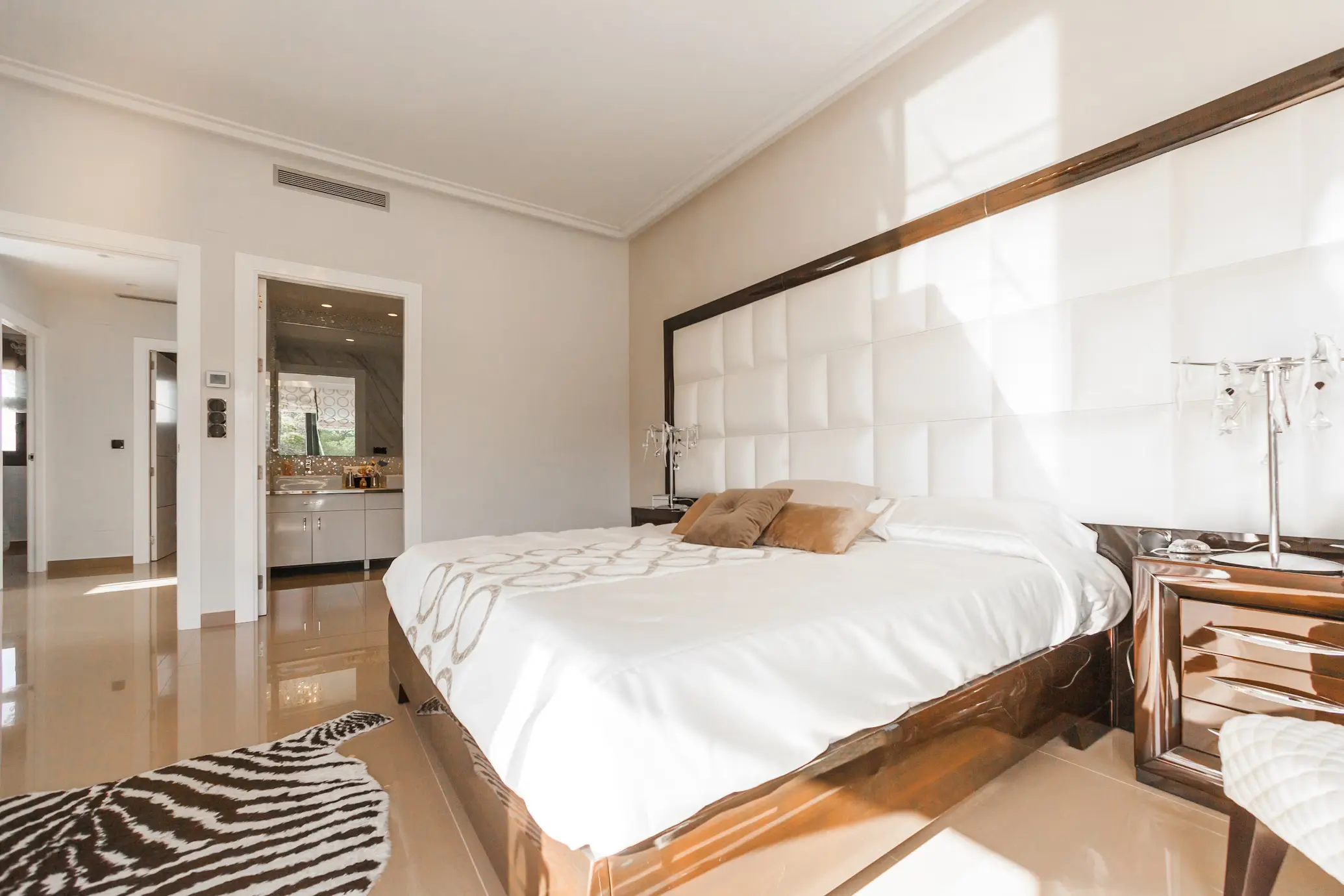Imagine walking into a bedroom that instantly calms your mind and soothes your soul. No clutter, no distractions—just a peaceful retreat that invites relaxation. This is the essence of a Zen bedroom, achieved through the art of minimalism. Let’s explore how to transform your bedroom into a serene sanctuary.
The Philosophy of Minimalism
Minimalism isn’t about living in an empty, stark space. It’s about surrounding yourself with things that bring joy and serve a purpose. As Marie Kondo, the renowned organizing consultant, advises, “Live with intention. Walk to the edge. Listen hard. Practice wellness. Play with abandon. Choose with no regret. Do what you love. Live as if this is all there is” . Her philosophy of keeping only items that “spark joy” is perfect for creating a Zen bedroom.
My Journey to Minimalism
A few years ago, I realized that my bedroom was more of a storage room than a place of rest. Clothes piled on chairs, books stacked on the floor, and knick-knacks covered every surface. One weekend, inspired by a friend’s serene, minimalist home, I decided to declutter. The transformation was incredible. I felt lighter, slept better, and found myself spending more time in my peaceful retreat.
Decluttering: The First Step
The first step to creating a Zen bedroom is decluttering. Joshua Becker, author of “The More of Less,” states, “Clutter is stuff that doesn’t belong in your space. It’s anything that is distracting, unused, or unloved” . This means not only getting rid of physical clutter but also creating a visually calm environment.
Tips for Decluttering:
- Start Small: Begin with one area, like your nightstand or closet. Don’t try to tackle everything at once.
- Keep, Donate, Discard: Sort items into these three categories. Be honest about what you truly need and love.
- Clear Surfaces: Keep surfaces like your dresser and nightstand clear. Only essential items should be out in the open.
Choosing the Right Colors
Colors play a significant role in setting the mood of your bedroom. Soft, calming colors like white, beige, soft grays, and pastels can help create a serene atmosphere. Avoid bold, bright colors that can be overstimulating.
A Splash of Calm
When I redecorated my bedroom, I painted the walls a soft, warm gray. The change was immediate—my room felt more open and tranquil. I added a few pastel-colored cushions and a light beige throw, which made the space feel cozy without being overwhelming.
Simple and Functional Furniture
A Zen bedroom features simple, functional furniture. Fumio Sasaki, author of “Goodbye, Things,” says, “Minimalism is a tool to rid yourself of things that weigh you down” . Choose beautiful and practical pieces, avoiding anything overly ornate or bulky.
Furniture Tips:
- Bed: Opt for a low, platform bed with clean lines.
- Storage: Use furniture with built-in storage to keep things out of sight.
- Nightstands: Simple nightstands with a drawer or two are ideal. Keep the top clear except for essentials like a lamp and a book.
Incorporating Natural Elements
Bringing nature into your bedroom can enhance its Zen quality. According to a study by Marc D. Evans, incorporating natural elements can improve cognitive function and reduce stress.
Natural Elements to Consider:
- Plants: Add a few easy-to-care-for plants like succulents or a peace lily. They not only purify the air but also add a touch of nature.
- Materials: Use natural materials like wood, cotton, and linen for furniture and textiles.
- Light: Maximize natural light. Use light, airy curtains to let in as much sunlight as possible.
Keeping It Simple
Francine Jay, author of “The Joy of Less,” reminds us, “Having many things does not equate to a happy life. It can be quite the opposite”. A Zen bedroom should prioritize simplicity and functionality over excess.
Decoration Tips:
- Art: Choose a few meaningful pieces of art rather than covering every wall. A single, large piece above the bed can make a statement.
- Bedding: Stick to high-quality, comfortable bedding in neutral tones. Avoid busy patterns.
- Accessories: Limit accessories to a few cherished items. A minimalist clock, a small vase, or a simple lamp can add personality without clutter.
Creating a Relaxing Atmosphere
The ultimate goal of a Zen bedroom is to create a space where you can relax and recharge. Colin Wright, author of “Less,” emphasizes, “Minimalism is not about deprivation, it’s about intention. It’s about making room for things that truly matter”.
Relaxation Tips:
- Scent: Use essential oils or a diffuser with calming scents like lavender or eucalyptus.
- Sound: Consider a sound machine with natural sounds or soft music to help you unwind.
- Lighting: Use soft, warm lighting. Avoid harsh overhead lights. Instead, use lamps and fairy lights to create a cozy atmosphere.
The Science Behind a Zen Bedroom
Creating a minimalist, Zen bedroom is not just about aesthetics; it also has proven benefits for your well-being. A study by Kathleen Vohs found that clutter can increase stress and anxiety. Reducing clutter in your bedroom can lead to better mental health and improved concentration.
Another study by Wendy M. Troxel showed that a cluttered bedroom can disrupt sleep quality. By keeping your bedroom tidy and minimalist, you can promote better sleep. Additionally, research by Charles A. Czeisler highlights the importance of natural light in regulating sleep-wake cycles. Ensuring your bedroom has ample natural light can help you maintain a healthy sleep pattern.
The Zen Difference
After transforming my bedroom into a minimalist retreat, I noticed significant changes in my life. I felt more rested, less stressed, and more focused. My bedroom became a haven where I could escape the chaos of daily life and find peace. The simple act of decluttering and creating a serene space had a profound impact on my overall well-being.
Conclusion
Maximizing minimalism to create a Zen bedroom retreat is about more than just decorating. It’s about creating a space that promotes relaxation, mindfulness, and well-being. By decluttering, choosing calming colors, incorporating natural elements, and keeping things simple, you can transform your bedroom into a peaceful sanctuary. Remember, as Ernie Zelinski, author of “The Minimalist Home,” says, “Simplifying your surroundings can simplify your life”. Embrace minimalism and enjoy the serenity of a Zen bedroom retreat.



